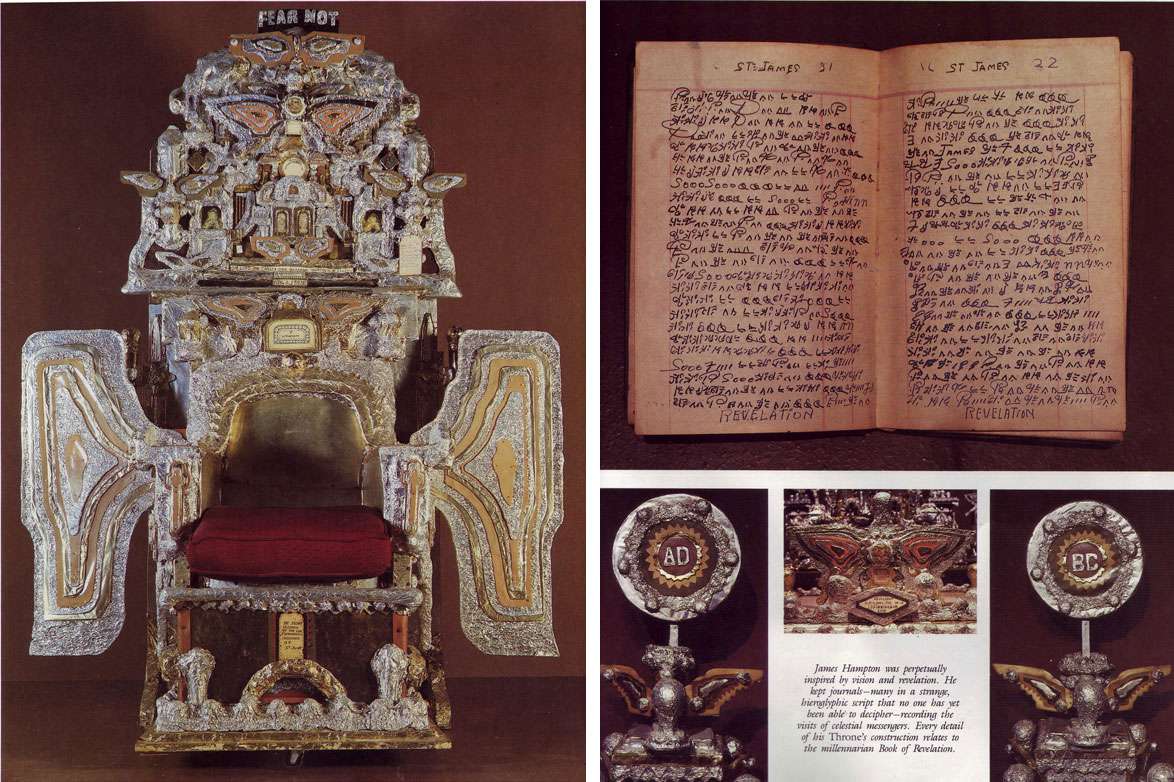
From the Schultheis piece on Hampton published in Art and Antiques, from which these images are scanned:
You couldn't ask for a more perfect piece of allegory: the furniture for the Second Coming of the Jesus of the poor and oppressed made from the refuse of the old, doomed world.Schultheis also writes that Hampton's family knew about the throne, but were "reluctant to talk about it...It awed, almost frightened them." Yeah, that sounds about right.
All joking aside, it is a remarkable creative synthesis of absolute junk; you can even make out the hundreds of dead, foil encrusted lightbulbs dripping like stalactites from the alterpiece/icon/god-knows-what-it-is-part-Mr. T-part-Tibetan-reliquary. Obviously, in this case, pictures speak louder than words.

Luckily, the owner of the garage that Hampton was renting didn't destroy the throne when the artist died. Instead, he rented the garage to a sculptor, with the throne still inside. (What?!! Can you imagine renting a garage and finding THIS INSIDE?!) That sculptor apparently showed it off to several artists and curators, and eventually it gained quite a reputation— enough of one that it was purchased by an anonymous benefactor and then moved to the National Museum of American Art in Washington, where it still resides.
Scans from Art & Antiques, December 1984.

No comments:
Post a Comment